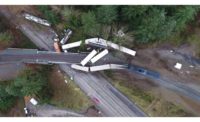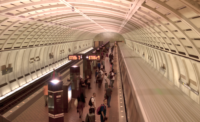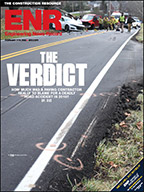As its investigation continues into the deadly June 22 crash of two Metrorail cars in suburban Maryland near Washington, D.C., the National Transportation Safety Board (NTSB) is urging the Washington Metropolitan Area Transit Authority (WMATA) to incorporate enhanced safety redundancy into its train control system as quickly as possible.
The agency also called on the Federal Transit Administration to advise other transit agencies using similar automated controls to evaluate their systems for adequate safety redundancy.
Metrorail's control system, which automatically regulates train speed and location, has come under scrutiny after a train traveling at high speed rear-ended a stopped train, killing nine people, including the moving train�s operator. NTSB tests following the crash found that a recently repaired track circuit at the crash site intermittently did not detect the presence of a train in the same location as the stopped train in the June 22 incident. As such, the circuit failed to send a signal that would automatically stop an approaching train.
While NTSB has yet to determine the specific cause of the crash, it expressed concern that the control system failed to prevent the incident. As a result, the Board recommended that WMATA implement a real-time backup system that would alert operators to stop or slow their trains when the primary control system no longer detects other nearby trains.
In a statement, WMATA noted that such a backup system will have to be invented, as "there are currently no systems available commercially that could provide the Metro system with the kind of alerts that the NTSB has recommended." WMATA added that it will work to implement NTSB's recommendations as soon as possible, and has begun contacting vendors capable of developing a custom solution for the Metrorail control system.
The agency has also received NTSB approval to convene an independent panel of experts in signal systems prior to the completion of the crash investigation.





